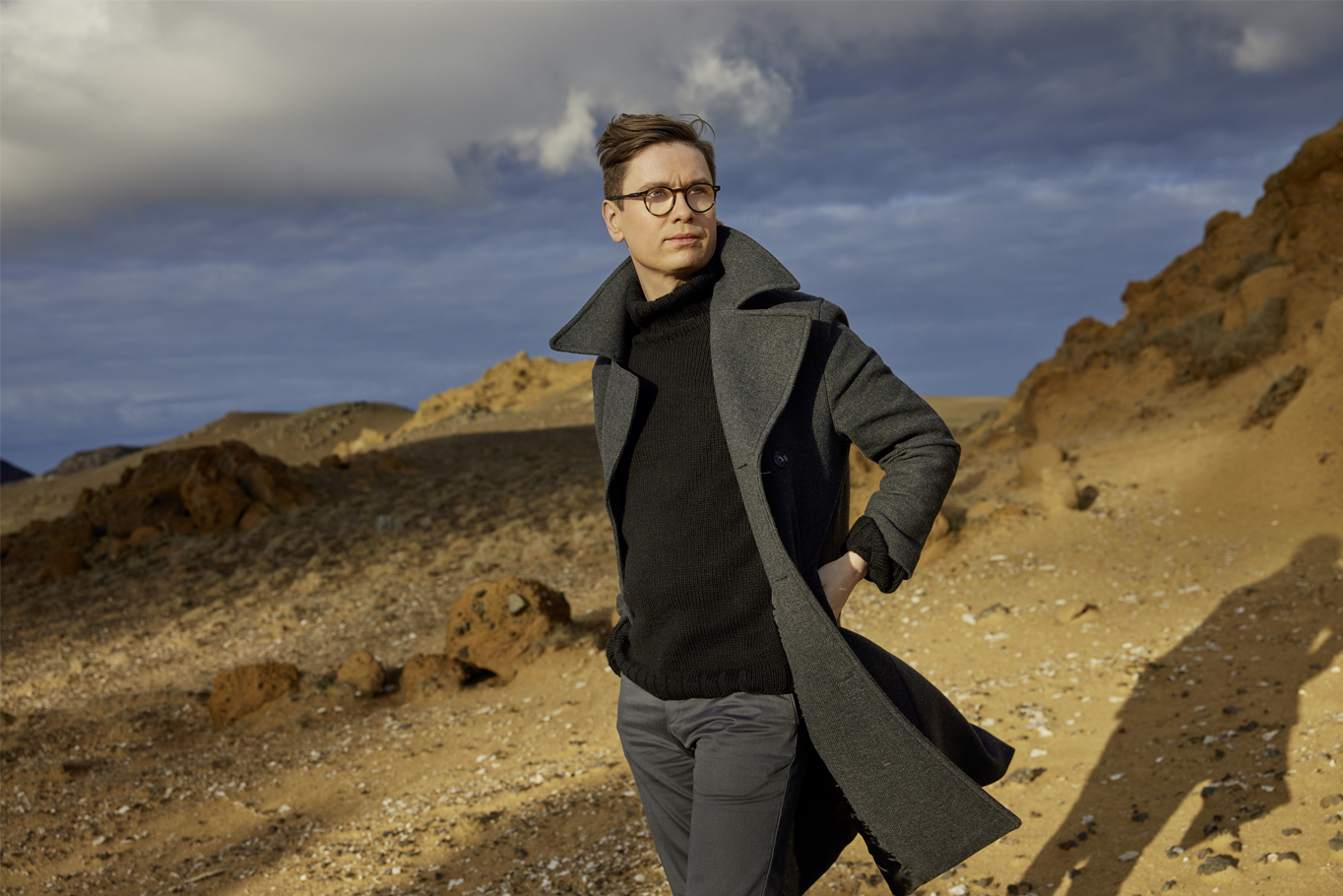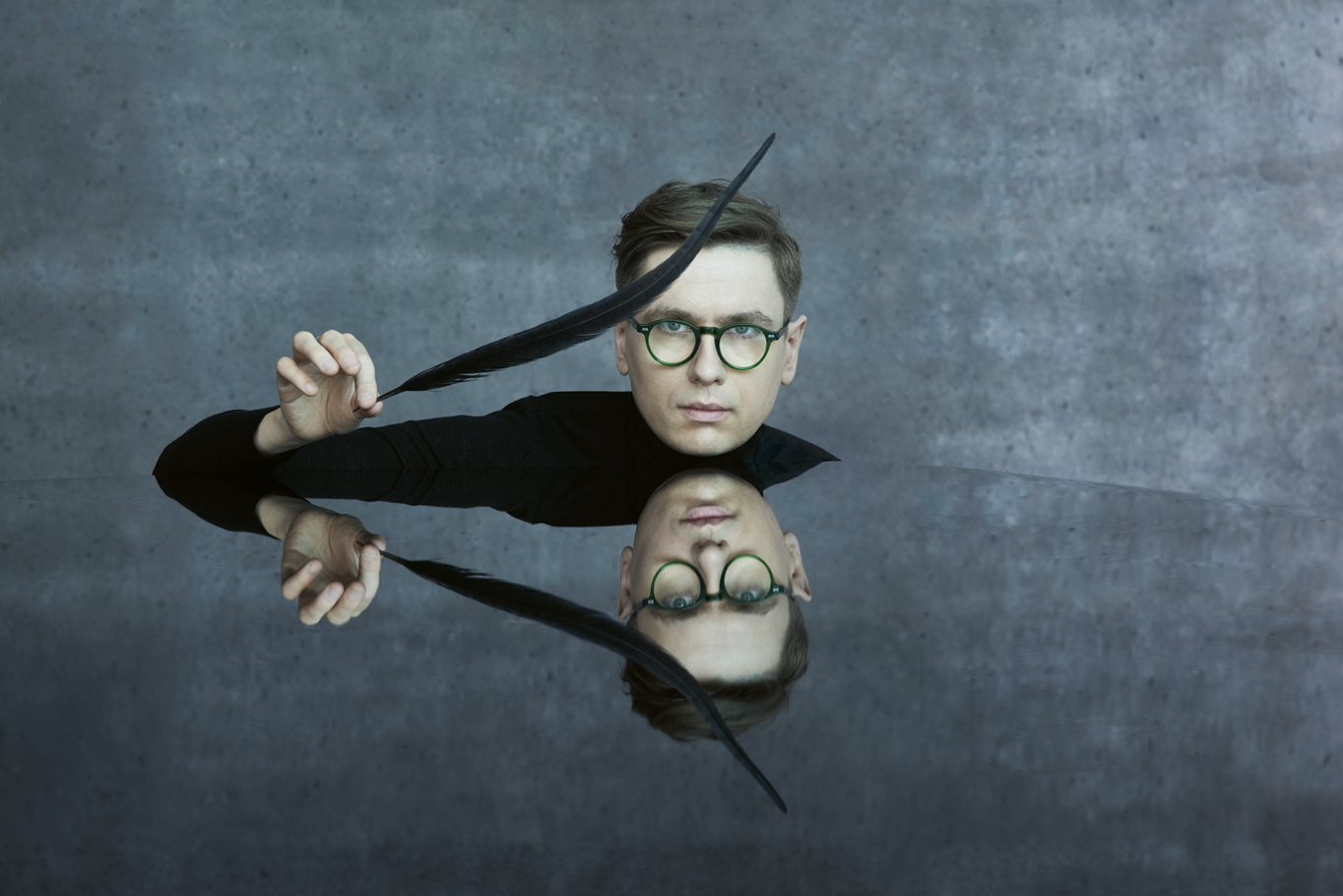
‘A poet can't escape being a poet’: Víkingur Ólafsson makes his Sydney debut
27 February, 2024
Icelandic pianist Víkingur Ólafsson makes his long-awaited Sydney debut in March with a stunning week of concerts, performing music by Bach and Ravel. And as he explains, these composers each offer something unique – but with more similarities than you might think.
By Hugh Robertson
Víkingur Ólafsson is one of the biggest names in classical music. Since bursting onto the scene with his first album for Deutsche Grammophon in 2017 the accolades and awards have followed in waves, each new album causing more to join the chorus singing his praises.
‘The new superstar of classical piano,’ wrote The Daily Telegraph (UK); ‘a breathtakingly brilliant pianist,’ enthused Gramophone. ‘Whatever he plays,’ said The Times (London), ‘Ólafsson treats the music with equal distinction: articulation wonderfully fleet and clean; the phrasing flexible, always alive; the range of touch in his fingers stretching into infinity.’
Ólafsson will finally make his Sydney debut in March, and he is making up for lost time with five concerts across one extraordinary week: a solo recital of Bach’s monumental Goldberg Variations, followed by four performances of Ravel’s ravishing Piano Concerto in G together with the Sydney Symphony conducted by Principal Guest Conductor Sir Donald Runnicles.
Either concert would be a landmark event in an orchestra’s season; the two together are an extraordinary opportunity to experience the full breadth of Ólafsson’s artistry.
That might sound like hyperbole, but Ólafsson is every bit as excited to be here as we are to have him: thrilled that everything – the timing, the repertoire, his entire career – has built to this moment.
‘These are the two perfect pieces of music,’ Ólafsson says with a big, boyish smile. ‘And lovely enough they are both in G major, and their fundamental disposition is toward optimism. It's music that has that Mozartian quality of bringing happiness and bringing a smile to your face. So that is a nice way of entering a country with music.’

This past year Ólafsson has embarked on an extraordinary musical odyssey devoted to Bach’s Goldberg Variations. He has performed this landmark work all over the world, originally planning 88 concerts, one for each key on a piano (though he admits that due to overwhelming demand he is getting closer to 100), and his recording was released in October 2023 on Deutsche Grammophon to more rave reviews. ‘Bach at the keyboard has rarely sounded so fresh, expressive and joyous,’ wrote the Sunday Times (UK); ‘Ólafsson’s clarity of texture and articulation are marvels to behold,’ said Limelight.
But amongst this ocean of Bach, Ólafsson’s concerto performances have been incredibly rare. In fact he has only performed with orchestra twice. ‘I made exceptions in two places, Sydney and São Paulo [Brazil], because those are two places that I have been meaning to go for years. I said no to every great orchestra in Europe, and the US. I said no to everything – but I did include Sydney and São Paulo.’
Ólafsson’s enthusiasm for the Ravel is obvious, and it is not hard to see why it has become a staple of his concert repertoire.
‘It's a perfect concerto,’ he says enthusiastically.
‘What this piece does is bring together an incredible array of different things into it. Of course you have the obvious American influence in this work. Obviously you have almost Gerswhin-esque stuff in there. But you also have a lot of things coming from the East – you have a lot of Orientalism in the harmonies.
‘You have this incredible second movement that everybody looks forward to and loves – both the performers and the audience. The most nostalgic waltz of all time, I would dare say, with a rhythmic tension which creates this feeling of unfulfilled longing. You have the incredible toccata in the third movement that very much looks back to the toccatas of Bach, and actually to Couperin and Rameau.
‘The way he writes on the piano, it just glitters.’
It's not just the writing for the piano that Ólafsson loves, but also Ravel’s writing for the orchestra. And in fact Ólafsson reveals that this piece is one of his favourite works to do when performing with an orchestra for the first time because of the interplay between soloist and ensemble.
‘It’s such a good piece to debut with an orchestra,’ he explains. ‘You get to know the orchestra very personally because you're playing duos with so many of the instruments – you are accompanying them and they are accompanying you in a very, very intimate way. It's an ideal way of getting to know an orchestra.
‘And you have the most perfect writing for the orchestra and the most incredible orchestration of any piano concerto that I know of. And you see it when the orchestra plays this piece how much they love how he uses their huge instrument. The way he makes the woodwinds shine, the way he makes the strings swing, you know, the way he makes the percussion give just the right spice and edge to all of this.
It's a thrilling piece of music. And the message is one of optimism and sort of celebration.
‘When you have a beautiful summer day and you're by a fantastic lake, and the sun glitters on the surface of it – that’s the overall feeling of the Ravel Concerto. It's that kind of just sort of beauty that is almost too bright for your eyes, but we are drawn to it and we want to be inside it.’
It is a concerto that offers endless delights no matter how many times you have listened to it, but Ólafsson is quick to point out that its charms are immediately apparent to the first-timer as well.
‘Just listen to these melodies and listen to the rhythms – and that's it. Those melodies, from the very first melody from the piccolo and the trumpet, just listen to this and see where it takes you. This music creates images in your mind.
‘Sometimes I think with music it's just good to simply think about melody and rhythm and see what else comes. You can add to that a million elements in Ravel because he's so complex and incredible and refined. But we don't need that on first listening. Just listen to the good tunes.’

On first glance Bach and Ravel might seem polar opposites, the Baroque exactness and precision of Bach a world away from the lush textures and rich orchestrations of Ravel. But Ólafsson argues case that the two are far more alike than we tend to think.
‘In terms of craftsmanship those two have quite a lot in common. Ravel is one of the most refined musical architects of all time, and I would say the same applies to Johann Sebastian Bach. These musical structures are so intensely perfect and at the same time, deeply human.
‘That is something that sometimes people overlook when they think about Ravel and when they think about Bach: the kind of level of perfection and sophistication is so enormous that one can almost overlook the direct human element. In the end, those are extraordinarily human composers and the message of their music is that of humanism.’
Which brings us, inevitably, to Bach, and the Goldberg Variations.
The Goldberg Variations are something like the Hamlet of the piano: audiences know them inside and out, and sooner or later every major pianist must offer their interpretation. In an article for The Guardian, Ólafsson revealed that he had been dreaming about recording the Goldbergs for 25 years. So why now?
‘I just turned 40 and realised now is my time to do the Goldberg Variations,’ says Ólafsson. ‘This is my year to reflect, and it's my year touring the whole world playing this, my favourite work of all time.
‘I told the New York Times it's a workaholic’s sabbatical, you know. I'm taking a year off by playing Bach.’
Legacy and posterity is clearly something on Ólafsson’s mind.
‘I think the Goldberg Variations represent Bach's message for posterity. This is the last piece he published,’ says Ólafsson. ‘Bach only published four books of music in his lifetime, but he chose this. I think that’s a very interesting choice, and a bet on posterity.’
This is his testament when it comes to keyboard writing. It is an encyclopedia for how you think and dream on the keyboard.
‘But it is something that would never have sold too many copies, if he wanted to try to become more famous. I think he was playing a bigger game, but the Goldberg Variations show us a little bit of what he wanted the world to remember him for.
‘He's always writing outside of his own time. Sometimes with the Goldberg Variations, what I think is so striking and beautiful about them is that they are a message to the future. And when you listen to the Goldberg Variations and play them today, you cannot escape thinking about the last three sonatas of Beethoven, much of Schumann, some Wagner, a lot of Mahler. This piece had an incredible influence on later giants of music history – this piece has really shaped so much of what came afterwards.
‘It's also interesting to think about 1741. It becomes even more original and even more incredible that Bach would be able to invent something like this without everything else that we know today. The invention of this piece is even more magnificent if you think about it from that perspective.’
What is perhaps most amazing about this work is that even after a year of performing it, after close to 100 concerts, Ólafsson is still finding wonder in it, mystery in it, and joy in performing it night after night. And a big part of that is the different audience responses that he experiences in each performance.
‘It is a very beautiful thing – this work becomes a part of everybody's life who plays it, and indeed very often it becomes a part of the listener's personal lives. Something about the work makes us reflect on our existence.
‘There's something about the cyclical nature of the Goldberg Variations, it is almost like a metaphor for the human condition. The return of the Aria at the end, like the return of the hero in The Odyssey, or the return of ourselves, at the end of our own lives, to our beginnings.
‘And when you play it for an audience, you have all these people together in a room but they are all are on their individual paths, and they all go to a different place with this music. And that is the beautiful paradox of the Goldberg experience – we are so connected to other people but in the end we are also alone.’
At one point in our conversation I remark how extraordinary it is that Bach produced so much music – over a thousand works – often in a very mercantile manner, having to produce yet another cantata for the weekend’s church service. And yet despite he was often capable of transcendence, of timelessness, of greatness. How is that possible?
‘A poet is a poet,’ says Ólafsson very matter-of-factly. ‘Even though Bach had all these obligations, a poet can't escape being a poet. And every little musical invention of Bach has that poetic core to it.
‘But in the end we don't listen to Bach today because of that mathematical awe that strikes us, but because of how this musical abstraction is very easily translated into human experiences that we all relate to one way or the other.’

